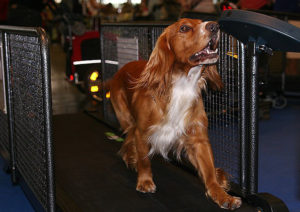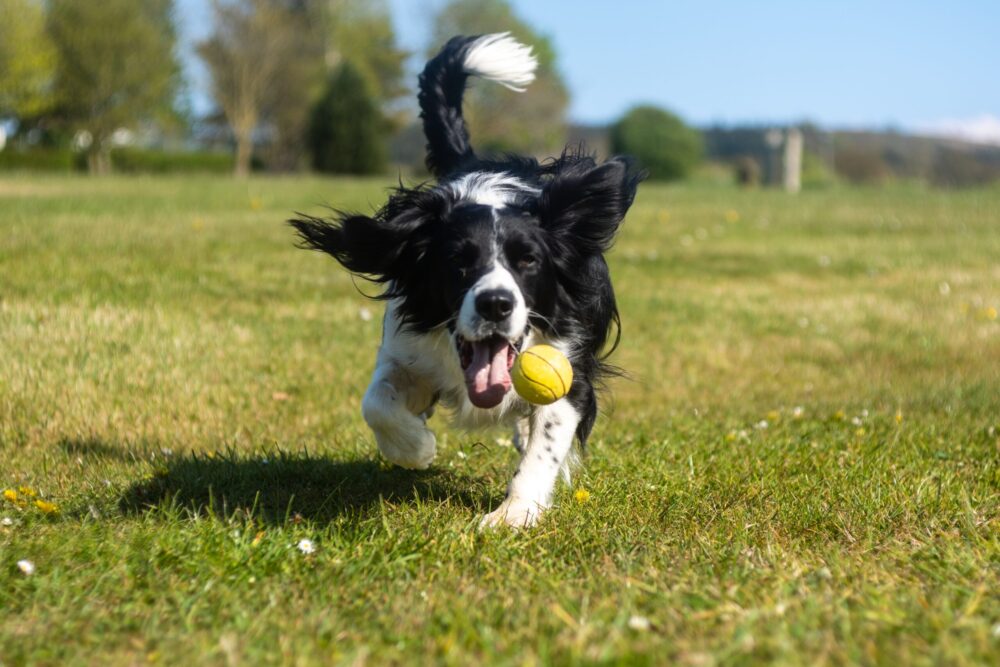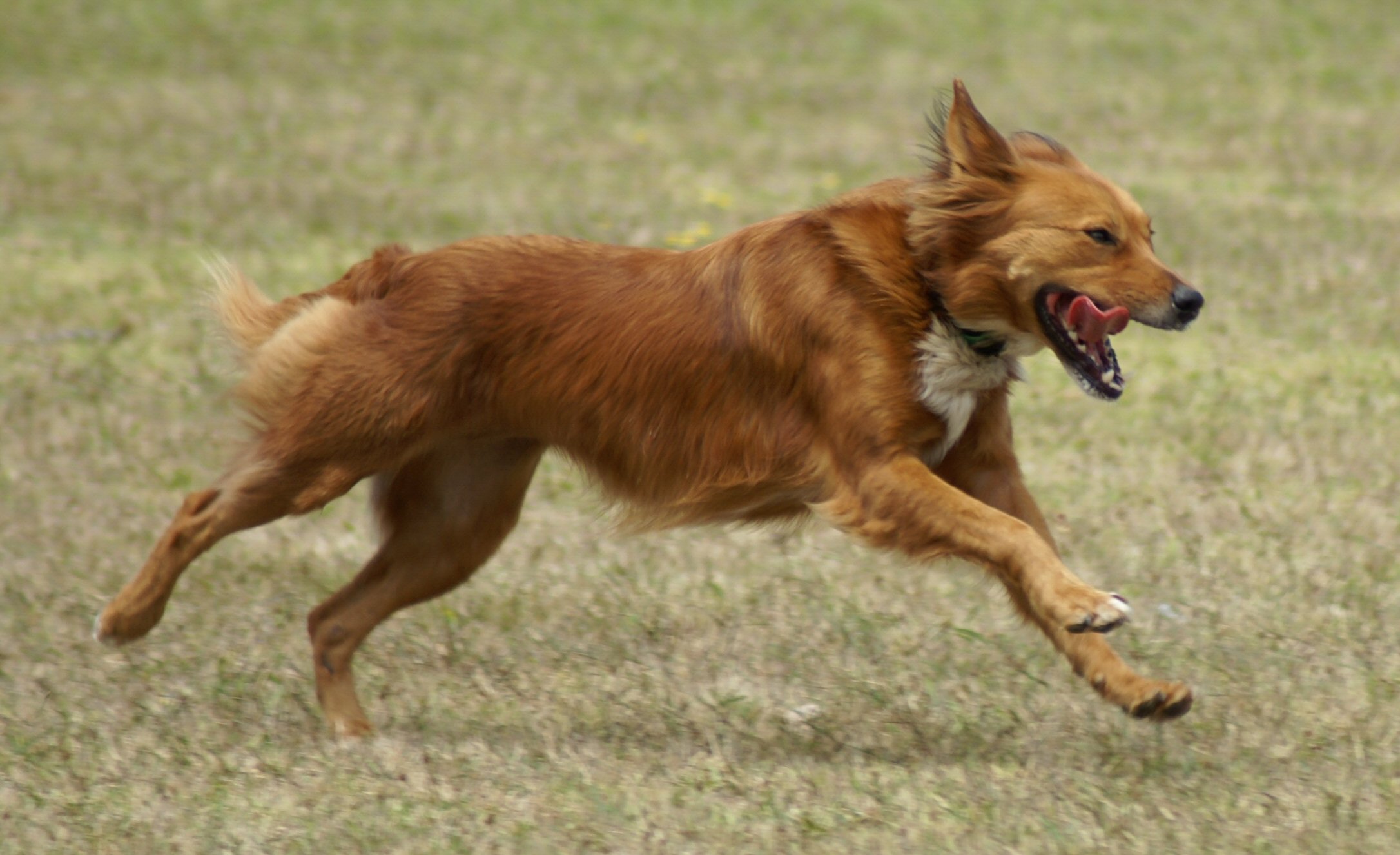Last Updated on February 15, 2023
If you have been following our articles, you would have read the article on Best Treadmill For Pitbulls and Best Treadmill For German Shepherd. The treadmill that we listed there is indeed awesome. However, more often than not, owners do not know How Long Should My dog Run On The Treadmill. This is indeed a very valid question, as you wouldn’t want to overly strain your dog. As such, let us now address the concern on How Long Should My dog Run On The Treadmill.
Understanding Your Dog’s Exercise Needs
Before we dive into the details of treadmill exercise, it’s important to understand your dog’s exercise needs. The amount of exercise that your dog requires can vary depending on their breed, age, weight, and overall health. Some dogs, like high-energy breeds, require more exercise than others, while older or overweight dogs may have more limited exercise needs. It’s important to talk to your veterinarian to determine the best exercise regimen for your dog based on their individual needs.
The Benefits of Using a Treadmill
A treadmill can be a useful tool for dog owners who want to provide their dogs with exercise in a controlled environment. Treadmill exercise can be particularly useful during extreme weather conditions, such as hot summers or cold winters, when outdoor exercise may not be feasible. Additionally, using a treadmill can be helpful for dogs who have physical limitations that make outdoor exercise difficult or impossible. Treadmill exercise can also be a great way to build endurance and stamina in dogs who participate in activities like agility competitions or hunting.
How Long Should My Dog Run On The Treadmill
 Honestly, there are days at which I would just arrive back at home, and I will refuse to do anything else. It can be sometimes really tiring for me at work, hence I would have heavy inertia. This does not bode well for my dogs, as they sometimes would want me to bring them out for a walk. I mean, which dog does not love a walk? Having said that, I do recognize that dogs, no matter if they are inactive or active, does require an avenue to exercise or to let off their excess energy. For people like me who are too buried in their work, treadmill for dogs works wonders.
Honestly, there are days at which I would just arrive back at home, and I will refuse to do anything else. It can be sometimes really tiring for me at work, hence I would have heavy inertia. This does not bode well for my dogs, as they sometimes would want me to bring them out for a walk. I mean, which dog does not love a walk? Having said that, I do recognize that dogs, no matter if they are inactive or active, does require an avenue to exercise or to let off their excess energy. For people like me who are too buried in their work, treadmill for dogs works wonders.
Of course, I do read that there are exercise machines that the dogs can use. The awesome treadmill for dogs is specifically designed for this purpose. Having said that, when we humans use the treadmill, we could easily gauge when we can stop running on it. Can it be the same for dogs too? Unfortunately, not quite so. So, then how long should my dog run on the treadmill?
Essentially, for beginners, the dog should walk or run on the treadmill for a maximum of 10 minutes. This is to ensure that your dog is acclimatized to running on the dog treadmill. Once they are adapted to the treadmill, you can lengthen the duration by intervals of 5 minutes each. This is not a hard and fast rule, as the duration is also determined by your dog’s physical condition as well as if your dog is showing signs of exhaustion. For the latter, one of the telltale signs is that the dogs are panting excessively and are looking at you while walking.
Factors to Consider Before Starting Dog On Treadmill
Before we dive into how long your dog should run on the treadmill, it’s important to consider several factors that can impact their exercise routine. These factors include:
- Breed and Size: Different dog breeds have different energy levels and exercise needs. Smaller dogs, for instance, may not require as much exercise as larger breeds. Similarly, some breeds, like Huskies and Border Collies, have high energy levels and need more exercise than other breeds. So, when determining the ideal treadmill running time for your dog, start by considering their breed and size.
- Age: Age is another important factor to consider when determining how long your dog should run on the treadmill. Puppies, for example, have developing bones and joints, so their exercise routines should be carefully managed to avoid injury. Similarly, older dogs may not have the stamina to run for extended periods of time, and may need to take breaks more frequently.
- Health and Fitness Level: Just like humans, dogs have different levels of fitness and health. If your dog is overweight or has health conditions like arthritis, they may not be able to run for extended periods of time. So, it’s important to consult with your veterinarian before starting a treadmill exercise routine and to monitor your dog’s progress as they become more fit.
- Temperature and Humidity: Dogs can easily overheat when exercising, especially in warm and humid conditions. If you’re running your dog on a treadmill in a room that’s not air-conditioned or well-ventilated, you’ll need to adjust their exercise time to ensure they don’t become overheated.
Training The Dog To Use The Dog Treadmill
Of course, you should train your dog to use the treadmill. If you simply try to force your dog to use it, they will grow an aversion to it, and the dog treadmill will eventually be a white elephant. Also, by training your dog to use the dog treadmill, you will be minimizing the onset of injuries to your dog.
Introduction Of Treadmill
As per all equipment, you should always introduce the treadmill to the dog. First of all, ensure that the treadmill is switched off. Usually, foreign machines, when switched on abruptly, will cause confusion for the dog. This will be detrimental if you want your dog to use the treadmill.
To start the introductory training properly, your first immediate objective is to get the dog to on the treadmill while facing in the correct direction. As per all training, you can use treats to achieve this objective. However, this can be done if and only if your dog did not develop an aversion towards the treadmill. If that is the case, then you might have a hard time trying to train your dog to love the treadmill. But none the less, it is completely doable. What you can do, is to ensure that the treadmill is seen as a positive object. Usually, owners will accomplish this by including the treadmill into the dog’s daily routine. For example, meals can be fed to the dog while they are near the treadmill.
Commanding Your Dog To Get On Treadmill
Once you have properly introduced the treadmill to your dog, and your dog did not develop an aversion towards the dog treadmill, then it is time for you to start the next step towards training your dog to use the treadmill.
To condition your dog to be acquainted with the commands, lure your dog onto the treadmill and add in the command with it. Usually, I would use “Go On”. After a while, stop using the lures, and use the commands alone. If your dog gets onto the treadmill without you luring it, please do praise your dog or reward her with a treat!
Acquaintance With The Noise
So far, we have yet to switch on the Treadmill. In this step, we will get the dogs to be acquainted with the noise coming from the treadmill. Switch on the machine, and stand close to it. Lure your dog to your location with a treat in hand. You can repeat this over the course of several days. Eventually, your goal is to get the dog to approach the treadmill, when it is switched on, without any extrinsic motivation.
Using The Treadmill For The First Time
Once the above steps are done correctly, your dog should be able to get onto the treadmill by command, and your dog should be acquainted with the noise. Now it is time for the dog to start using the treadmill for the first time.
To start off, turn the speed of the treadmill to the lowest and command your dog to get onto the treadmill. Ensure that the dog is not on a leash and that you have a hand ready to scoop the dog away if necessary. When your dog starts to move together with the running platform, you can reward him with a treat. What I did was to place treats on the non-moving parts of the machine. In this way, my dog had to move forward on the platform to get the treat itself. Once your dog is able to walk comfortably on the treadmill without you providing a treat, you can start to slowly increase the speed over days.
Congratulations! Your dog is now trained to use the treadmill!
Tips for Keeping Your Dog Safe and Healthy on the Treadmill
Now that you know how long your dog should run on the treadmill, here are some additional tips to keep them safe and healthy during their indoor workouts:
- Use a Treadmill with Side Rails: A treadmill with side rails can help prevent your dog from accidentally falling off during their workout. This can be especially important for dogs who are new to treadmill running or who may become easily distracted.
- Provide Plenty of Water: Make sure your dog has access to plenty of fresh water before, during, and after their treadmill workout. This will help keep them hydrated and prevent overheating.
- Use Positive Reinforcement: Like any type of training, treadmill running can be stressful for some dogs. Use positive reinforcement, such as treats and praise, to help your dog feel comfortable and motivated during their workout.
- Supervise Your Dog: It’s important to supervise your dog during their treadmill workout to ensure they stay safe and healthy. This is especially important if you’re using a manual treadmill, as you’ll need to adjust the speed and incline manually.
- Warm Up and Cool Down: Just like humans, dogs benefit from warming up before exercise and cooling down afterward. Take your dog for a short walk or do some light stretching before and after their treadmill workout to help prevent injury and promote recovery.
Common Mistakes When Using Dog Treadmill
There are several dog treadmill mistakes when the owners start the entire dog treadmill ritual for the dog. While not all of them are fatal, they can still cause injuries to the dog. Let us find out more.
Inadequate Warming Up And Cooling Down
This is one of the most common dog treadmill mistakes. Dogs, like humans, still require warming up to loosen the muscles. You should always stretch the muscles along your dog’s legs and neck. This will help to warm up the dog. Also, you should always cool down the dog after they run on the treadmill. When we say cool down, we don’t mean that you should conduct the ice bucket challenge on the dog. Let the dog on a brisk walk for about 5 to 10 minutes as it will help the dog to cool down and hence not tightening the dog’s muscles.
Connecting A Leash On The Dog
Indeed, this dog treadmill mistake is pretty common. Some owners will think that by putting the dog on a leash and tethering it to a point on the treadmill, they are ensuring that the dog is safe. This is totally wrong. By putting the dog on a leash while they are on the treadmill, you are ensuring that the dog has no proper place to maneuver around when it comes to emergencies. This is dangerous as your dog couldn’t leap off the treadmill at all.
If you would want to guide the dog to run on the treadmill, you can still use a leash, but you should give it some slack and hold the end of the leash on your hand.
No Fun
While running on the treadmill for the first few times can be fun, it will be boring when it becomes to repetitive. To prevent this, add a variety of challenges when your dog runs on the treadmill. As starters, you can vary the speed. You can also add in an incline to vary the difficulty. This leads on to our next dog treadmill mistake.
Too Much Incline
While providing an incline for your dog is a good thing, it can be tricky for your dog if they are not conditioned to run for more than 3 or 5 minutes over an incline of 5 – 7%. For dogs who are thrown to the mill straightaway, their bodies can’t take the sudden stress on the back and hips of the dog. This is detrimental to the dog’s health.
Even if your dog is conditioned to run on an incline, you should always ensure that the dog is not running on the incline for long periods of time. As a rule of thumb, try to let the dog run on an incline for a maximum of 10 minutes at any one time.
FAQs When It Comes To Letting Dog Run On Treadmill
- Can all dogs run on a treadmill? While many dogs can benefit from treadmill running, it’s important to consider your dog’s breed, age, and health before starting an indoor exercise routine. Consult with your veterinarian to determine if treadmill running is appropriate for your dog.
- How fast should I set the treadmill for my dog? The ideal treadmill speed for your dog will depend on their size, fitness level, and energy level. Start with a slow speed and gradually increase the pace as your dog becomes more comfortable and fit.
- Can I leave my dog alone on the treadmill? No, it’s important to supervise your dog during their treadmill workout to ensure they stay safe and healthy.
- Should I use a manual or automatic treadmill for my dog? Both manual and automatic treadmills can be used for dogs. However, manual treadmills require more supervision and may not be suitable for larger dogs.
- How often should I let my dog run on the treadmill? The ideal treadmill frequency for your dog will depend on their exercise needs and your schedule. As a general rule, aim to let your dog run on the treadmill for 30 minutes or less, 3-4 times per week.
Conclusion
Treadmill running can be a safe and effective way to keep your dog fit and healthy, but it’s important to consider several factors, such as breed, age, health, and fitness level, when determining the ideal treadmill running time for your furry friend. By following the tips and guidelines outlined in this comprehensive guide, you can help ensure that your dog stays safe and healthy during their indoor workouts. Remember to always supervise your dog during their treadmill session, provide plenty of fresh water, and use positive reinforcement to keep them motivated and comfortable. With the right approach, treadmill running can be a fun and rewarding experience for both you and your dog.
 Dog N Treats All dogs deserve to be pampered
Dog N Treats All dogs deserve to be pampered



